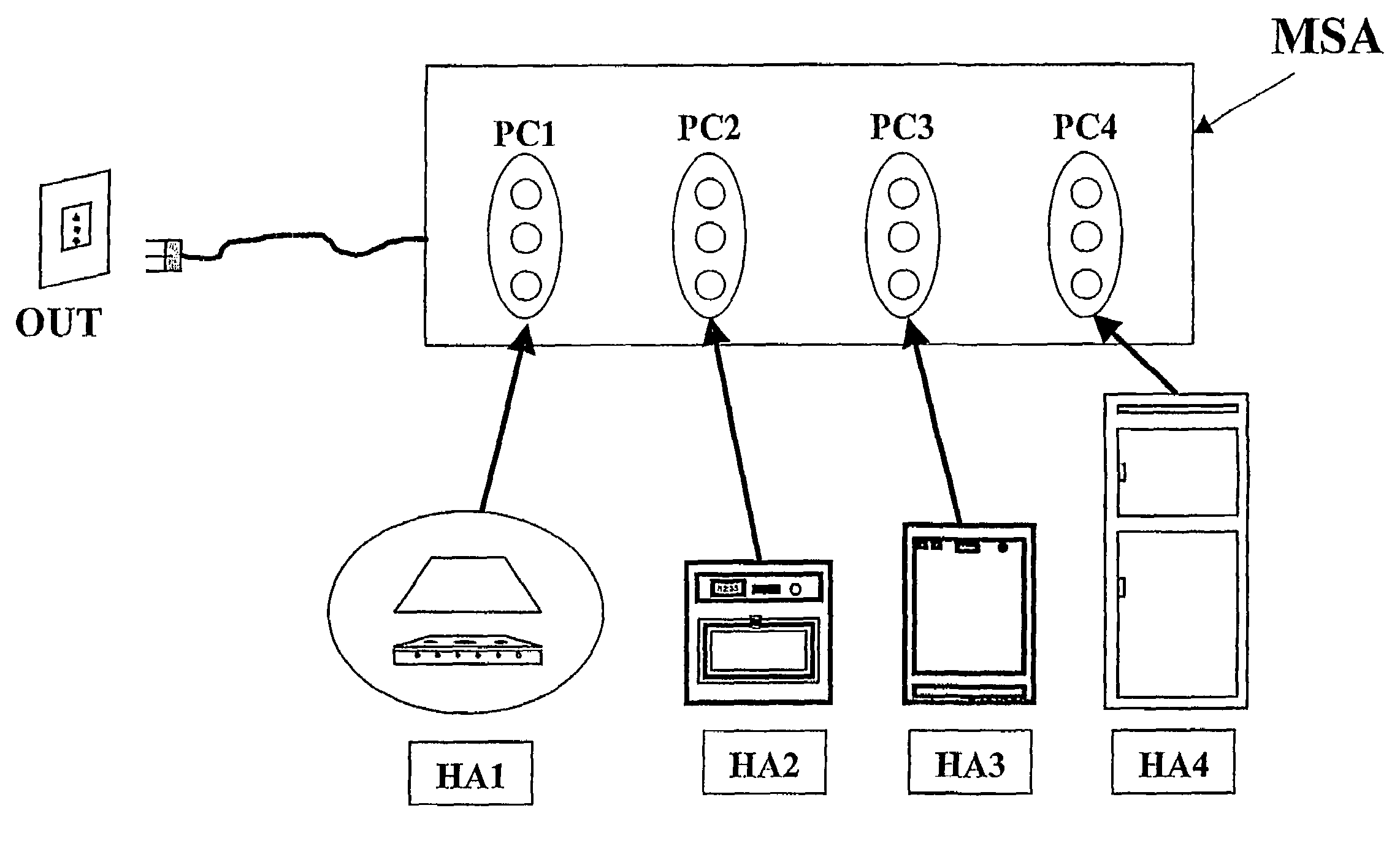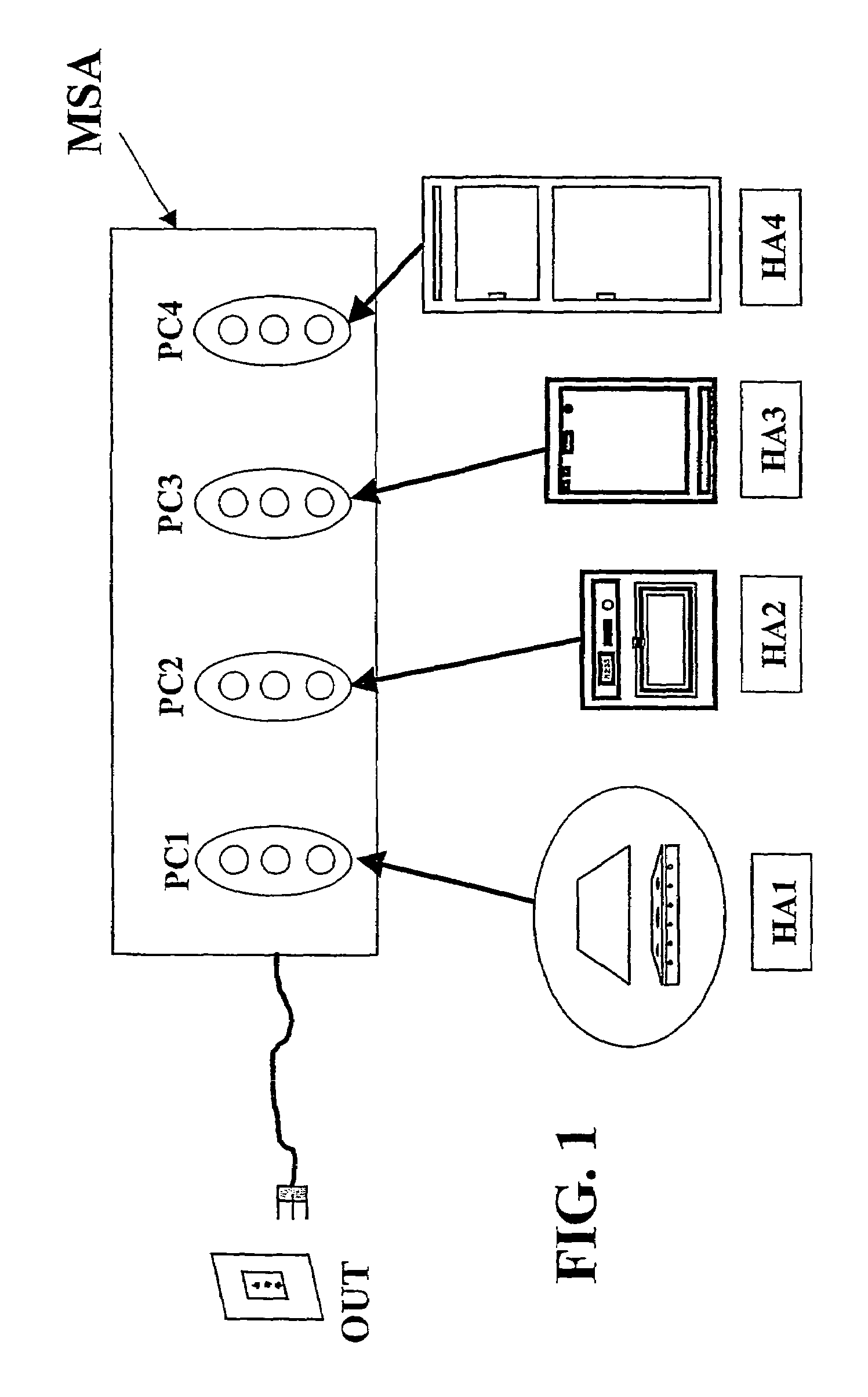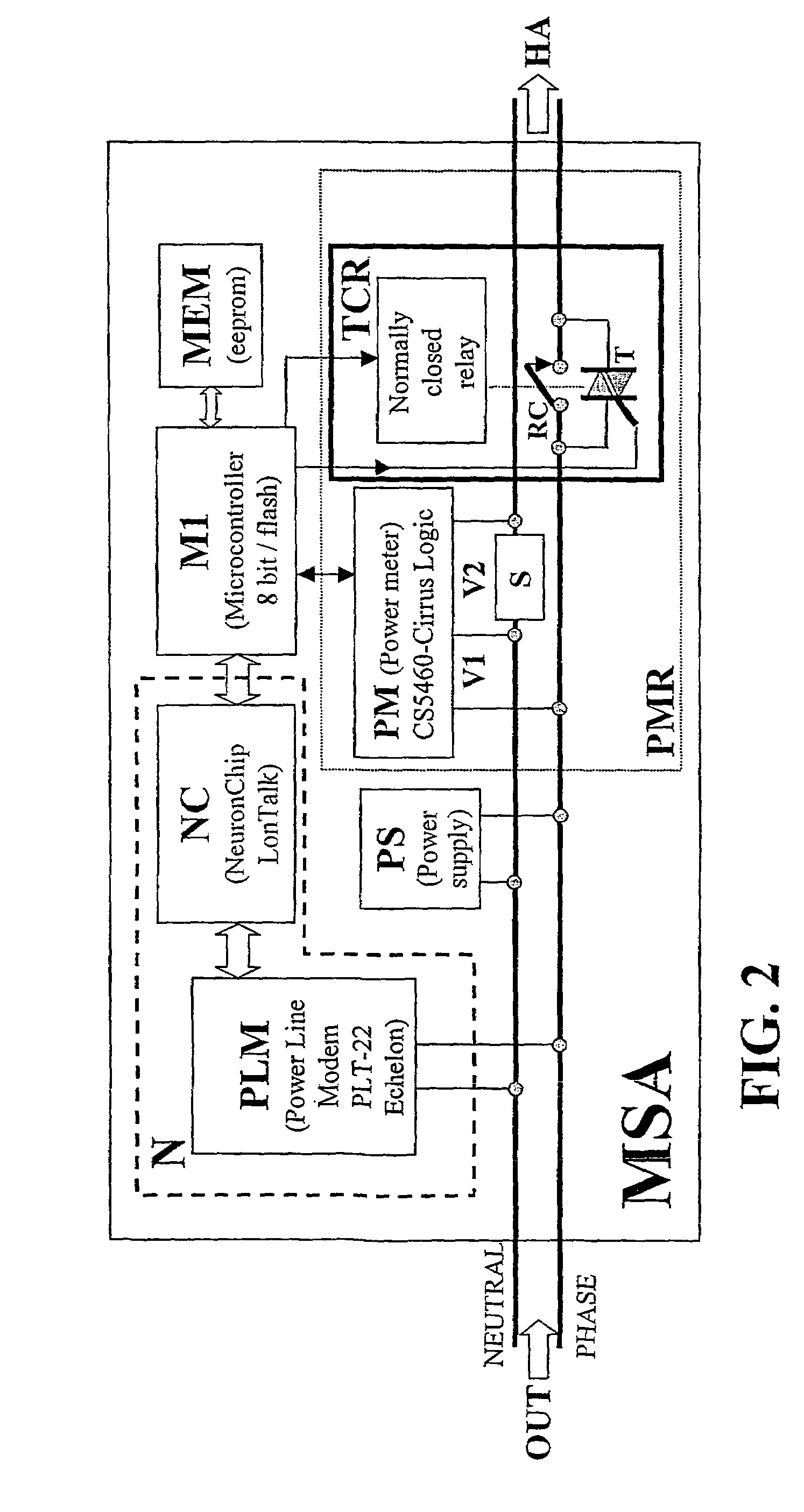System and device for monitoring at least one household electric user, in particular a household appliance
a technology for monitoring systems and household appliances, applied in the field of household appliances, can solve problems such as considerable waste of time, wear and occasional faults of certain household electric users, and appliances, and achieve the effect of rationalizing energy consumption
- Summary
- Abstract
- Description
- Claims
- Application Information
AI Technical Summary
Benefits of technology
Problems solved by technology
Method used
Image
Examples
Embodiment Construction
1. The Monitoring Device According to the Invention
[0044]FIG. 1 illustrates the way of connection between a monitoring device according to the present invention, indicated with MSA (Multiple Smart Adapter) and a plurality of household electric users; in the non limiting example, the electric users are four, indicated by HA1–HA4 and represented by a hob with hood, an electric oven, a dishwasher and a refrigerator, respectively. As it can be imagined, this configuration is particularly advantageous in the field of built-in household appliances, i.e. for kitchen applications where the household appliances are integrated inside the furniture.
[0045]The device MSA is interposed between a current outlet indicated with “OUT” in FIG. 1 and the electric users HA1–HA4; for this connection, the device MSA is equipped with a plurality of current outlets, indicated with PC1–PC4, within which the plugs of the supply cables of the same users HA1–HA4. Therefore, as it can be seen the physical connec...
PUM
 Login to View More
Login to View More Abstract
Description
Claims
Application Information
 Login to View More
Login to View More - R&D
- Intellectual Property
- Life Sciences
- Materials
- Tech Scout
- Unparalleled Data Quality
- Higher Quality Content
- 60% Fewer Hallucinations
Browse by: Latest US Patents, China's latest patents, Technical Efficacy Thesaurus, Application Domain, Technology Topic, Popular Technical Reports.
© 2025 PatSnap. All rights reserved.Legal|Privacy policy|Modern Slavery Act Transparency Statement|Sitemap|About US| Contact US: help@patsnap.com



